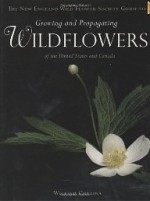 If you like wildflowers and want to know more about them this book could be exactly what you are looking for. It includes detailed information on 200 genera and 1000 species of plants from the personal experience of the author, William Cullina, a leading authority on wildflowers with extensive experience cultivating them. Written in an easy to read style, the information flows in a steady stream but always with a personal touch.
If you like wildflowers and want to know more about them this book could be exactly what you are looking for. It includes detailed information on 200 genera and 1000 species of plants from the personal experience of the author, William Cullina, a leading authority on wildflowers with extensive experience cultivating them. Written in an easy to read style, the information flows in a steady stream but always with a personal touch.
The opening sections of the book give the reader a working knowledge of botanical names, taxonomy, and the general principles of plant biology and ecology. Cullina points out that understanding the fundamental, interrelated environmental factors that combine to determine the successful growth and establishment of plants in specific areas, is necessary for choosing wildflowers for garden. A special section describes the climate and dominate vegetation of the nine floristic provinces of North America.
The bulk of the book is devoted to an encyclopedia of plants. Each genus is described in general including information on culture, uses, associated wildlife, and propagation, and is accompanied by a picture of one specific example. Each genus is then amplified by more information on individual species. So, for example, eight different species of bluestars are discussed under Amsonia, with information given on hardiness, soil, native habitat, size, and color. In addition, Cullina adds his own opinions gleaned from experience about various plants. We learn that “Narrow-leaf bluestar is somewhat slow-growing and slow to establish at first…but well worth seeking out for the rock garden or low border.” As a gardener, I appreciate this kind of advice of an expert.
A final chapter covers the fundamentals of propagation including seed collecting, seed sowing, germination requirements, potting out, and cuttings. An extensive chart covering all the genera mentioned in the book gives specific information on growing the plants from seed, as well as suggestions for taking cuttings and making divisions. Cullina includes tips and suggestions for success.
Three appendixes complete the book. The first lists wildflowers for special sites so that you can select wildflowers suitable for such situations as sunny, dry locations, or woodlands, to provide food for birds and mammals, and more. A second appendix gives over 70 sources of propagated native plants and seeds from all over the country. Contact information as well as comments is included. A third appendix lists native plant societies of the United States and Canada with contact information for each.
The extensive information on the 1000 wildflowers included in the text gives the novice or expert gardener a good idea of the huge diversity of native flora and a feel for the personalities of the plants. This information is extremely helpful when selecting wildflowers for the garden that are both appealing as well as environmentally suitable. More photographs of more species in their natural habitats would enhance the presentation, but the book is outstanding even without them.